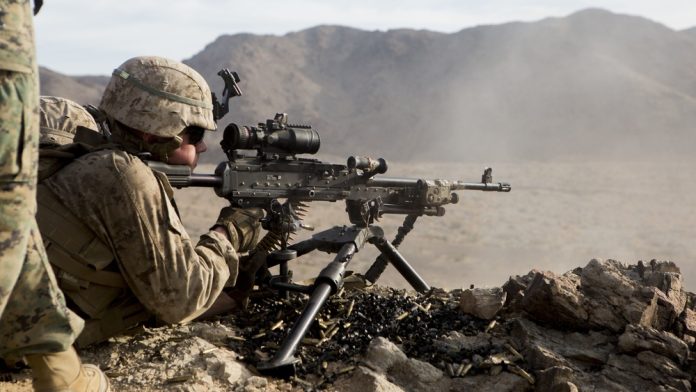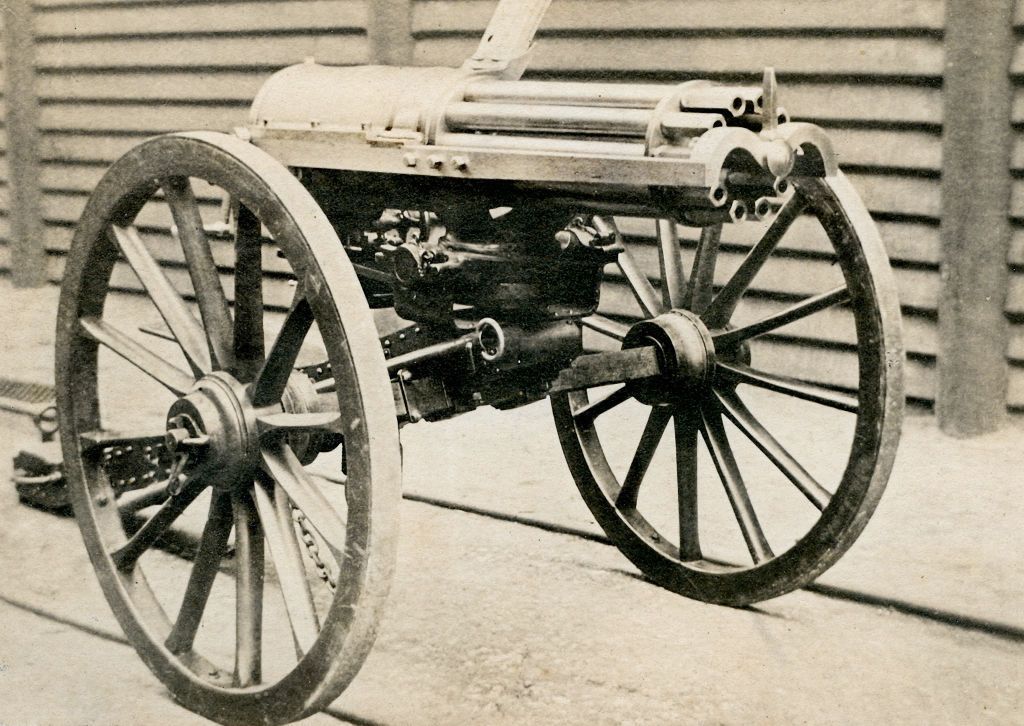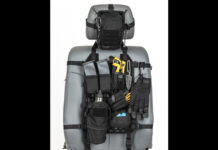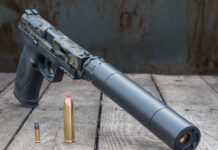
Machine gun is a bit of an interesting term. Unlike other firearms, the term seems to be a bit more nebulous. Where does it come from? Who invented it? What exactly does it mean? When I say the term machine gun, what do you picture? A lot of people picture any firearm that fires in any form of full auto. That’s more or less the NFA definition of a machine gun, and this means everything from a Glock 18 to an M60 is a machine gun.
You might also just picture the M60 and similar belt-fed designs. That’s more or less the military definition of the machine gun. Both definitions involve full auto fire, and both are more than acceptable definitions. However, that’s not what the term has always meant; in fact, the term machine gun is a bit silly.
Origins of the Term Machine Guns
The first time the term machine gun was used was by Richard Gatling, inventor of the Gatling gun. The term first appeared in his patent for the Gatling gun. The Gatling gun is a multi-barreled firearm that uses a hand crank to operate. It feeds from a top-loaded hopper-type magazine. The rate of fire was about 200 rounds a minute. It’s a fairly complicated design and relies on mechanical loading and firing; thus, it is called a machine gun. Two hundred rounds per minute is tame by today’s standards. In fact, in the modern era, the Gatling gun isn’t even a machine gun.

By law, a Gatling gun is not an NFA regulated weapon. You can order one and transfer it through your normal FFL; no SOT or tax stamp is necessary. Tippman makes Gatling guns in 9mm and .22LR, and they are considered semi-auto firearms. The crank requires the user to operate movement to fire, and a machine gun, by law, requires a trigger that must be continually pressed to fire. Yet, Gatling guns were called machine guns back in their day. They certainly have the rate of fire of a machine gun.
Before the Gatling Gun
The Gatling gun was arguably the first successful machine gun, but not the first machine gun. As we glance back into the past, the idea of what a machine gun is or isn’t can be defined by the understanding of what a machine is in the first place. If you go back to the 17th century, the Chinese invented a hopper-fed cannon that would be considered a machine gun.

The famed Puckle gun was a cannon design with a rotating cylinder. The cylinder was hand-cranked and users could easily swap the cylinder for a fast reload. The gun wasn’t very successful, but it was a machine gun by the definition of the era. You can dig through the history of rapid-fire weapons, and you’ll find dozens of examples.
Many were fragile, and many couldn’t be reliably mass-produced, but they often used different forms of machinery to operate. This includes spring-loaded magazines, rotating cranks, and various hopper designs, including some that were more or less magazines with spring and gravity-fed designs.
Evolution of the Machine Gun
The one thing that all these various machine guns have in common is their ability to fire rapidly in a sustained manner. The term rapidly really depends on the definition of the term rapidly for the era. If your basic infantry rifle can fire two rounds a minute, then the Puckle gun, which fires at a rate of nine rounds per minute, seems pretty fast.
In the modern era, most infantry MGs and assault rifles fire at the same rate or fire. However, the machine gun can do so at a sustained rate for a longer period of time. The term has most certainly evolved and grown, but in the modern era, it’s rather silly when compared to the complicated mechanical guns like the Gatling gun or the Puckle gun. Believe it or not, the design of the M240 is less complicated than the design of the Gatling gun.

The machine gun of the modern era uses a similar gas-operated system as assault rifles or semi-auto rifles. An AK uses a long-stroke gas piston, and the M240 also uses a long-stroke gas piston system. The differences are rather minor when compared to the differences between a Gatling gun and a single-shot rolling block.
Terms are always nebulous and evolving, and rarely are they all that useful in a vacuum. It’s an interesting evolution of both terminology and firearms.



